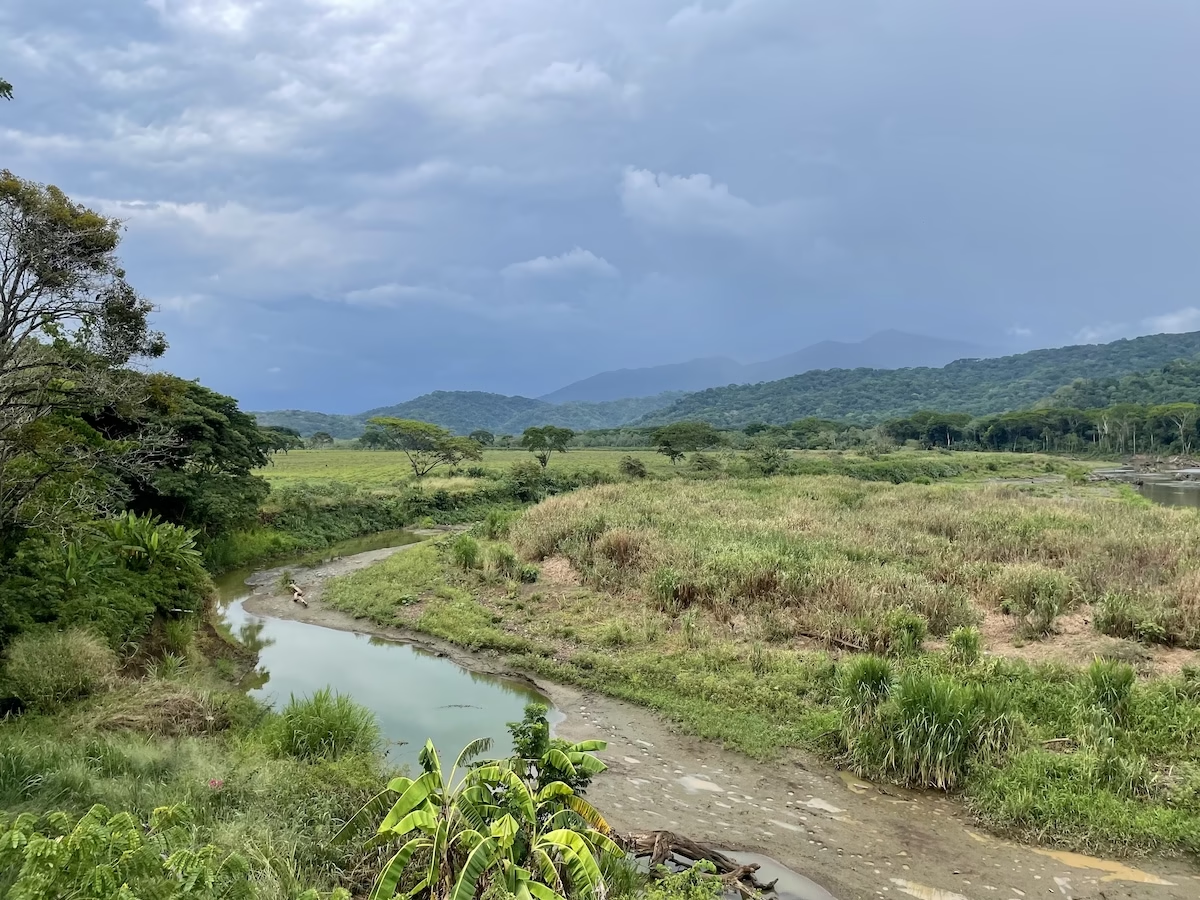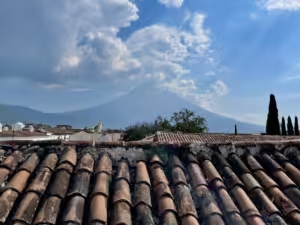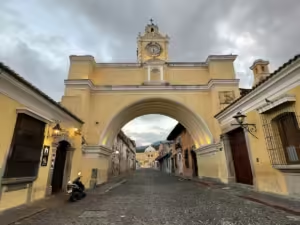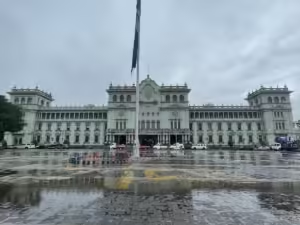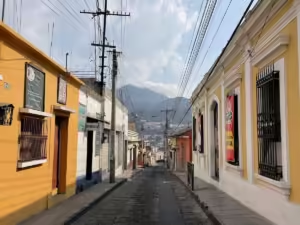Costa Rica has almost become synonymous with tourism. Ziplines rip through forest canopies, resorts clog the edges of pristine beaches, and colonies of North American retirees build their pickleball courts amid misty cloud forest. In many ways, Costa Rica could be a cautionary tale of over tourism.
But, somehow, despite the over-abundance of tourist traps and expat enclaves, Costa Rica still maintains a lot of the charm that made it a must-visit destination in the first place. The country has plenty of places where you can still wander away from the beaten path and discover hidden gems to call your own.
And did I mention the animals? Costa Rica has some of the highest biodiversity in the world. Scientists estimate over 500,000 species, about 5% of the species in the world, call this tiny Central American country home. With a little bit of patience, you can expect to see all sorts of wild creatures, ranging from adorable sloths to tropical birds to those cheeky little monkeys.
While Costa Rica is a super popular travel destination, it’s one of those super popular travel destinations that’s super popular for good reason. I’ve been to Costa Rica three times now, and most recently spent about two months wandering the country. I’ve yet to see it all. This guide will attempt to steer you away from the tourist traps and let you know which top Costa Rican destinations are actually worth it.

What to Know About Costa Rica
There is, of course, much more to Costa Rica than beautiful beaches and rainforest canopies. The country has managed to avoid much of the long political turmoil of its neighbors, but still has a surprisingly interesting history.
Compared to its neighbors, Costa Rica is an oasis of peace and calm. People call it “the Switzerland of Central America” for a reason. The country ranks highly in measures such as longevity, environmentalism and overall happiness. Costa Rica also spends a whopping 8% of its GDP on education (compared to only 5% in the United States).
Thankfully, despite being highly educated, the Costa Ricans aren’t snobby intellectual types. The Ticos, as they call themselves, are some of the friendliest and most welcoming people you’ll find this side of El Salvador. If you know a little Spanish, you’ll have no trouble finding locals to give you insights into their country and culture. If you don’t know Spanish, don’t worry. Costa Rica has plenty of English speakers.
Costa Rica is also one of the only places I’ve been to where environmentalism has become part of the national identity. Ticos are fiercely protective and proud of their biodiversity and environmental legacy. As they should be. Protecting nature is now almost a patriotic duty.
That’s not to say that Costa Rica doesn’t have problems. Crime and poverty exist here as they do everywhere. Costa Rica has, like much of the world, suffered from a post-pandemic increase in crime. Most of this crime, however, revolves around the drug trade and isn’t likely to affect the average tourist.
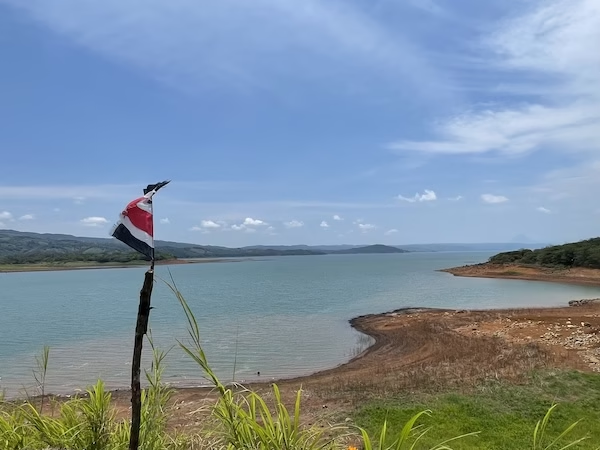
Costa Rica’s History
Before the Spanish arrived, Costa Rica was home to a number of indigenous groups. Nobody built any pyramids, but the Diquis culture did build a bunch of enigmatic stone spheres that you can still see in museums in San Jose and around the Osa Peninsula. The native peoples were also experts at crafting gold jewelry.
That gold jewelry caught the eye of old Cristopher Columbus during his fourth voyage to the Americas. Legend has it that the gold baubles he saw led to the name Costa Rica, or “rich coast.” However, the Spanish were soon disappointed when they failed to find the mountains of gold and silver they expected. Instead of being El Dorado, Costa Rica ended up as somewhat of a colonial backwater.
After independence in the early 1800s, Costa Rica plugged along as a mostly agricultural country. In the 1820s the coffee barons brought in much needed income that helped modernize the bigger cities. Those coffee barons brought in Jamaican immigrants to build Costa Rica’s one railroad. Their descendants still populate the Caribbean coast today. The United Fruit Company swarmed in during the early 1900s, setting up plantations along the coast and exploiting the local population.
In 1948 a particularly bloody civil war broke out. After the violence ended, Costa Rica’s leadership got together and made a decision that would forever alter the course of the country’s history: they abolished the military.
Today, Costa Rica remains one of the few countries with no military. Although, the U.S. did use Costa Rica as a base for bloody interventions into other Central American countries during the 1970s and 80s. Despite Costa Rica’s strong sense of green patriotism, the country is still navigating the tightrope between protecting the environment and economic development. You still might see vast plantations of palm oil along the edges of national parks.
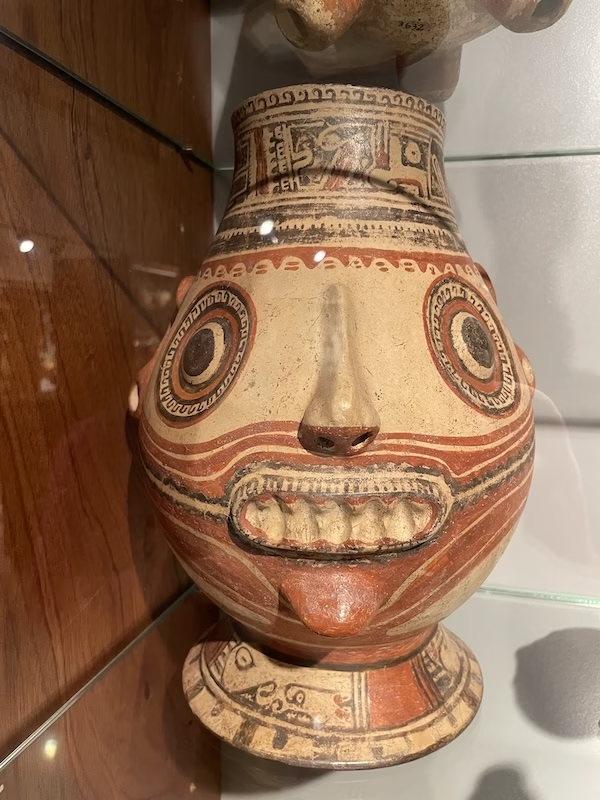
Practical Advice for Visiting Costa Rica
Costa Rica sits in the middle of the tropics and like most tropical countries has both a rainy and a dry season. The highlands are generally cool and mild, while the lowlands can be swelteringly hot. The sun is also quite strong, so don’t forget sunscreen and a nice, floppy hat.
There are two seasons, rainy season and dry season. The dry season coincides with winter, while the rainy season lasts in summer. Generally speaking, rainy season just means some heavy showers in the afternoon and clear weather the rest of the day. If you don’t mind getting a little wet, this can be a great time to visit as its generally cheaper and less crowded.
Being more developed, Costa Rica is significantly more expensive than other countries in the region. This can be quite a shock coming from Nicaragua. Food is especially pricey. Save money by doing most of your cooking yourself. Fruits and things like avocados are relatively cheaper and more delicious here. In restaurants, keep an eye out for casados, set lunches that are usually pretty decently priced. They aren’t gourmet, but they’ll fill you up.
Some of us like to fly by the seat of our pants and not plan anything. Others crawl by the hem of our pants and meticulously plan every detail. If you’re a planner, I suggest using Get Your Guide to book tours. They’re generally cheaper than online alternatives and offer a wide range of activities. If you book through the following link, I’ll get a small commission at no cost to you and you’ll gain the satisfaction of supporting an independent travel blog. Click here to explore tours in Costa Rica.
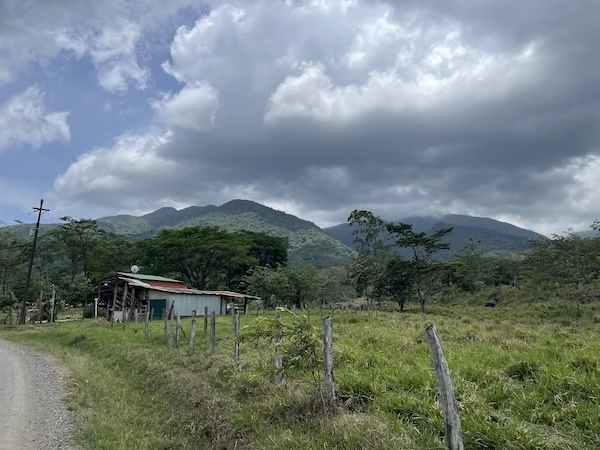
Transportation in Costa Rica
The bus is by far the cheapest and most interesting way to get around Costa Rica. Buses are generally safe, if not very quick or comfortable. Just keep an eye on your belongings. We’ve taken about a million buses in Costa Rica and never once had an issue.
CentroCoasting can help with schedules for most popular destinations. San José has numerous bus terminals, all spread out around the city. It’s not a very efficient system. Double check with your accommodation or a taxi driver to be sure you’re going to the right terminal.
A lot of people like to rent cars in Costa Rica. It’s much more expensive and you miss out on the experience of the local buses. However, Costa Rican drivers are very reasonable, especially compared with places like Guatemala. The roads in Costa Rica are terrible. Potholes seem to just open up out of nowhere, and sometimes the pavement just disappears all together. Also, we were warned to never park under a coconut tree.
Costa Rica is full of sketchy car rental agencies and pushy sales reps. That $9 a day rental you found online doesn’t include any number of tacked-on fees and charges. My friend had a very good experience with Vamos, so if you must rent a car, I’d suggest going through them. Really, though, I think the bus is better.
Ride share apps like Uber function in Costa Rica, but they’re illegal. I’ll say that again, Uber is illegal. I didn’t know this, and got chewed out by a taxi driver at the bus station. Taxi drivers work hard and are better trained. They’re also, generally speaking, pretty honest. It’s best to take an official, licensed taxi.
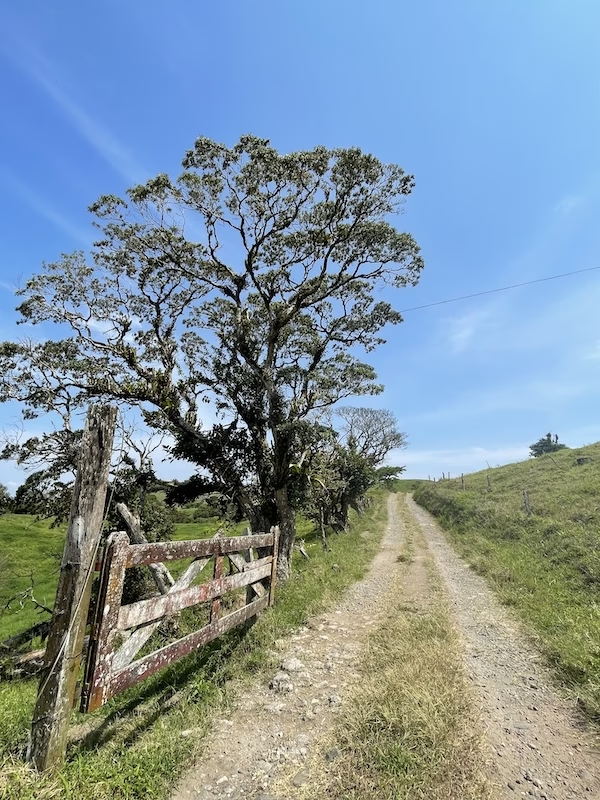
Is Costa Rica Safe?
Yes, the increased murder rate is definitely alarming. However, I never once felt unsafe in all my time in Costa Rica. Most of the violence in Costa Rica, as with most of Latin America, is due to the drug trade. Unless you get yourself involved in the drug trade, you’ll be fine. You could definitely find trouble if you go looking for it, but for the vast majority of law-abiding tourists, Costa Rica is still an incredibly safe place to travel.
While you’re unlikely to be a victim of violent crime, there is a chance of becoming a victim of petty crime. Costa Rica still has poverty, and rich tourists visiting impoverished places mean sometimes unattended bags or cell phones go missing. Keep your wits about you, but there’s no need to be paranoid. I’ve never had anything stolen, and I never met anyone else who has either.
Scams are another story. We came across numerous scammers and con artists in Costa Rica. Some guy in the Liberia airport approached my parents after a long flight and steered them to the wrong car rental company. A fake tour guide outside of Manuel Antonio National Park tried to convince us we couldn’t enter the park without an expensive guided tour. The guy changing money at the border slipped us the wrong number of bills. Again, don’t be paranoid, but keep your wits about you.
Remember that none of these scams are life threatening. It sucks to get ripped off, but sometimes that’s the price we pay for traveling in this hyper-competitive capitalist world we live in. The con artists are just trying to make a living, and they probably need the money more than you do. I’d much rather let it go than hold on to any anger and resentment, although that’s easier said than done.
I have some more thoughts about safety and crime in Central and South America. Read them here: Rethinking Travel Safety and Crime in Latin America
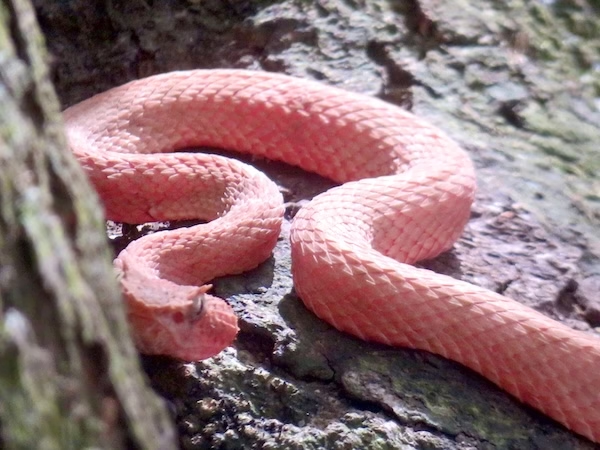
What are the Real Dangers in Costa Rica?
So, aside from crime, there are actually some real dangers in Costa Rica. As I mentioned before, the roads are often rough. During rainy season especially there can be landslides or hazardous river crossings. Another reason to take the bus.
We were attacked by monkeys in the Osa Peninsula and in Montezuma. Those white-faced capuchins maybe look cute, but they can get really aggressive, especially if they think you have food. Monkey bites can cause serious bacterial infections. Never feed any wild animals and always keep your distance. That’s why God invented the binoculars and telephoto lenses.
Costa Rica has miles of beautiful shoreline. It also has miles of dangerous riptides. Most beaches that I’ve been to are quite rough. You don’t really swim here; you get battered by the waves.
We also had a scare taking the boat to Drake Bay. It was like a movie. The sky darkened and our tiny little boat was overtaken by enormous waves, pounding rain and lightning. Thankfully, the captain knew what he was doing and we made it to shore safely. Always, always, wear a life jacket, even if the water looks calm.
Most importantly, don’t let any of the above scare you off from Costa Rica. Take the warnings on the State Department website with a grain of salt. Tons of people visit Costa Rica every year and tons of people return home without a problem.

Ethical Travel in Costa Rica
Costa Rica’s tourism boom has certainly helped bring an economic prosperity to many Ticos. However, tourism also has a dark side. Expats, retirees and digital nomads have basically taken over and gentrified the hell out of various Costa Rican towns. The local people, some of whom have lived in these towns for centuries, get displaced and priced out.
And then there’s the issues of development. Rainforest is cut down to make way for fancy resorts, short term rentals and retirement communities. Some areas are struggling to keep up with development, and the pressure it’s placed on electricity and water supplies.
So do whatever you can to ensure your money actually goes to the Ticos. Try and stay in locally owned hostels or guesthouses. Eat in local restaurants. Most importantly, if you do decide to hire a guide, make sure to hire a local person.
Costa Rica, being more developed, has attracted a lot of immigrants. Mostly from Nicaragua. Be nice to the migrants. You may even see some Venezuelans or others on their way to the United States. Do as the Ticos do and give them some change if they ask for it.
As I’ve mentioned before, Costa Ricans are incredibly proud of their country’s natural beauty. You can do your part to keep this beauty as pristine as possible. Be sure to stay on the trails and never, ever feed the animals. This should go without saying, but don’t litter.
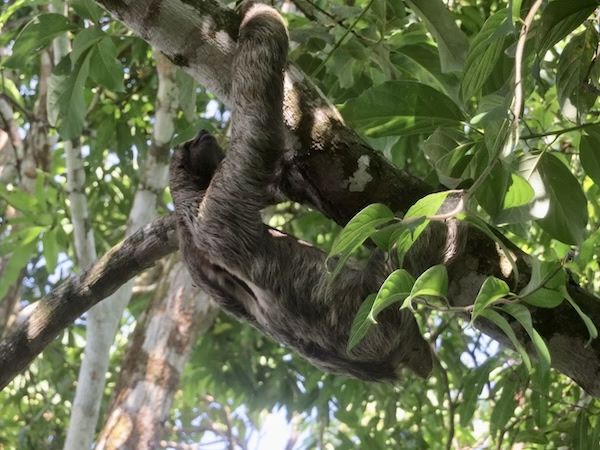
Where to Go in Costa Rica
Costa Rica is not a large country, but it seems to have an almost overwhelming number of options for places to visit. The options range from pleasant beaches to thick tropical rainforest and everything in between.
For first time visitors, the popular tourist spots of Arenal and Monteverde are probably your best bets. They’re both relatively easy to get to and give you a taste of some of the best Costa Rica has to offer. For seasoned visitors, or those of you with more time on your hands, the out of the way towns of Tortuguero and Drake Bay are astounding.
On one of the most fun, but also most stressful, aspects of travel is finding and booking places to stay. These days you have options ranging from dirt cheap hostel dorms to luxurious White Lotus style resorts. Thankfully, the internet is here to make finding accommodation easier.
Hostelworld is the go to app for finding hostels. For everything else, there’s Booking.com. If you book through either of the previous links, I’ll gain a small commission at no extra cost to you.
La Fortuna
Lar Fortuna tops the list of many a Costa Rican travel itinerary for good reason. It’s the place to base yourself for visits to the famous Arenal volcano. You can’t climb the volcano, but the surrounding national park is stuffed to the gills with trails. You’ll get plenty of views of Arenal’s near perfect triangular cone, as well as all sorts of bird and animal life. When you finish hiking, skip the fancy spas and take a dip with the locals in the nearby hot springs that flow down from the volcanic slopes. The town of La Fortuna itself is quite touristy, but somehow feels more tolerable than some of Costa Rica’s other hot-spots. There’s still enough local charm here to keep things interesting. La Fortuna is an excellent stop for first time visitors to Costa Rica.
You can read more about La Fortuna and Arenal Volcano National Park here: La Fortuna and Arenal National Park: Costa Rica’s Most Loveable Tourist Trap
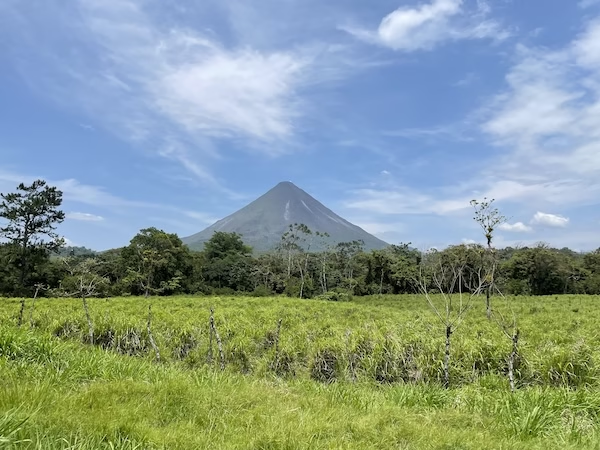
Monteverde
If you’re like me, you might be turned off by the hordes of souvenir shops and light up video signs advertising adventure resorts stuffed into the center of the town of Monteverde. Don’t worry, the tourist crap is easy enough to escape. Nearby, the Monte Verde and Santa Elena reserves are practically overflowing with lush, vibrant nature. A maze of trails crisscrosses through the misty cloud forests and if you hike for long enough, you’ll soon find yourself away from the crowds, surrounded by nothing but the sounds of nature.
Read more about the magical cloud forest of Monteverde here: Monteverde: A Guide to Costa Rica’s Misty, Magical, and Touristy Cloud Forest
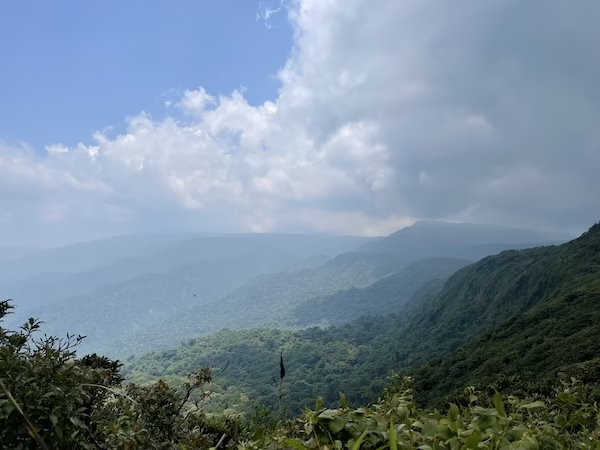
San José
A lot of people hate on San José. To be fair, the rough and tumble, gritty concrete capital isn’t quite what most people have in mind when they picture a Costa Rican vacation. But if you give it a chance, you’ll find that San José is a vibrant, fascinating city. There’s a wealth of street art, some first-class museums, a China town and heavy metal cafes to be explored. San José is also the place to go to experience the hustle and bustle of modern Costa Rican life and get a real authentic sense of Tico culture.
Read more about why you should visit Costa Rica’s capital city here: Why You Shouldn’t Skip San José, Costa Rica’s Concrete Jungle

Tortuguero
Tortuguero is a pain in the ass to get to, but that’s part of what makes it great. Here you can kayak through canals built by the banana companies decades ago, which are now home to all sorts of wildlife. At the right time of year, you can head to the beach in the evening and witness sea turtles laying eggs. There’s also jaguars. The town of Tortuguero itself is a pleasant, ramshackle collection of wooden buildings that’s unpretentious and seems uninterested in developing beyond what it already is.
Read more about exploring Tortuguero’s magnificent wildlife here: Stalking Sea Turtles in Tortuguero and Exploring Costa Rica’s Remote Jungle Paradise
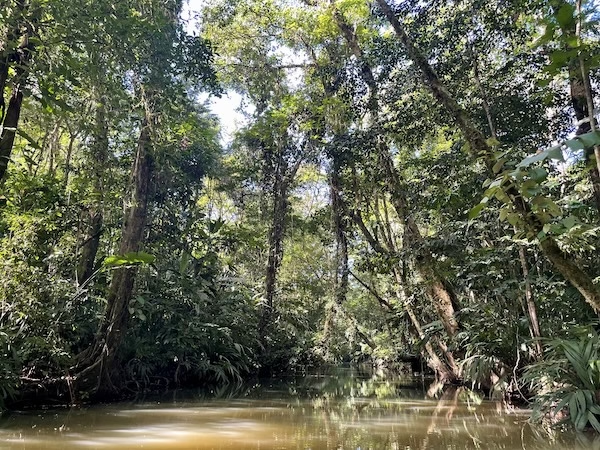
Drake Bay
The Osa Peninsula, in the far southeast of Costa Rica, is home to one of the most fantastic nature reserves in the country: Corcovado National Park. The park is only accessible by boat, guides are required, but it’s well worth the trouble. Monkeys, snakes and even the elusive tapir call this park home. The town of Drake Bay has also managed to avoid too much overdevelopment. There’s a fantastic trail that meanders along the coast through wild pacific rainforest. In the evening, scarlet macaws come to roost in the trees at the edge of town. For now, you can only get here by boat. Drake Bay might be my favorite place in all of Costa Rica.
Read more about our adventures in Drake Bay and the Osa Peninsula here: Facing Near Death in Drake Bay: a Guide to Visiting and Surviving Costa Rica’s Wild Osa Peninsula
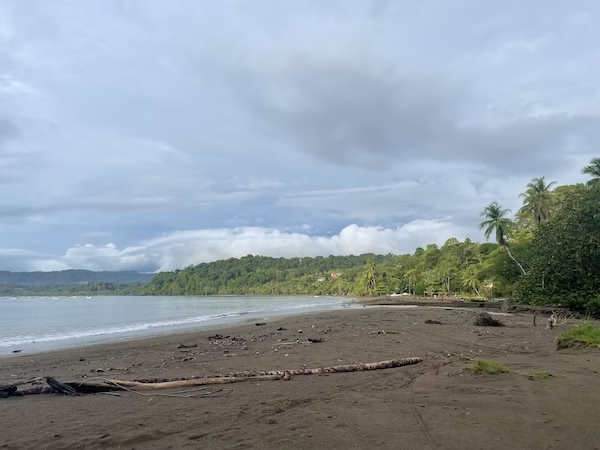
Bijagua
I almost didn’t want to mention Bijagua, but this little mountain village seems too good to keep to myself. This is off the beaten path Costa Rica, where we spent days without seeing another gringo and the local bar still has a hitching post for horses. It’s a great base to visit nearby Volcán Tenorio National Park, but you could also spend your days wandering along the many scenic dirt roads that spread out from the tiny town center. Bijagua is wonderful.
Read more about relaxing in Bijagua here: Bijagua is Costa Rica’s Best Destination for a Lovely Stroll
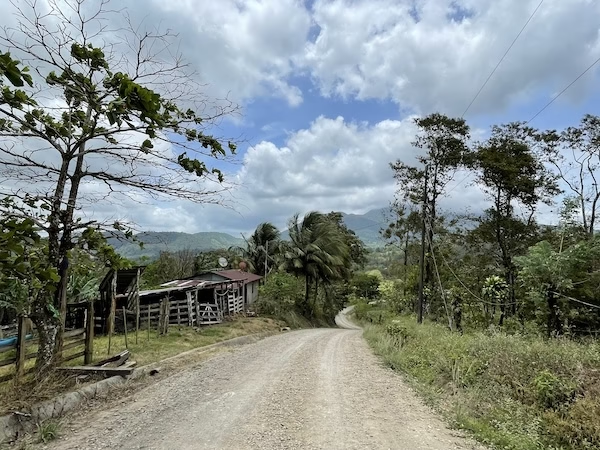
Playa Hermosa (Guanacaste)
In general, I found most of Costa Rica’s beach destinations to be a bit disappointing. The one exception, is Playa Hermosa, which was very nice in comparison. Be warned: Costa Rica has a lot of Playa Hermosas, and it’s easy to get them confused. I’m talking about the one in Guanacaste, a short hop and a skip from Liberia. Yes, it’s touristy, but it’s also quiet. The beach is great for splashing in the waves or kicking back with a beer and watching the sunset. Playa Hermosa is also well situated if you’re flying in or out of the Liberia airport.
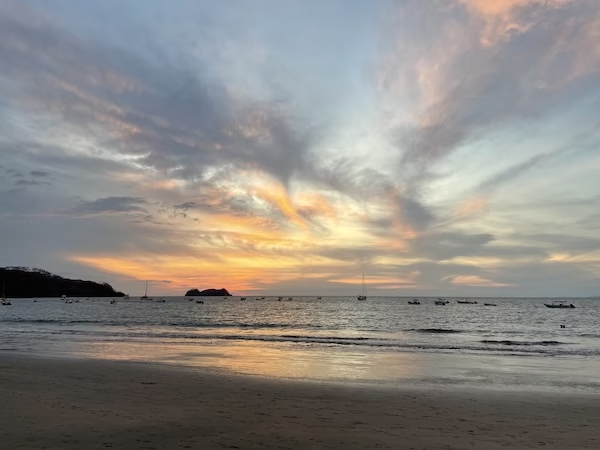
Where to Avoid in Costa Rica
I hope I’ve made it clear thus far that I really love Costa Rica. However, not every destination in the country can be amazing, and in fact, there are a number of real stinkers. I’ve mostly made this list of places to avoid in Costa Rica, because I see so many of these places listed in other travel guides. Feel free to see for yourself, but in my opinion, the following spots are best avoided.
Jaco
At some point, Jaco was once probably a pretty nice little surf town. Today, it is something else entirely. I’ve heard Jaco described as “a sunny place for shady people.” It’s the kind of place where the dark side of tourism creeps out from the shadows. Prostitutes ply the streets even at 7am, and cocaine is easier to get than a decent, cheap meal. There are high rise resorts, casinos and retiree bars blaring boomer rock hits from the 60s and 70s across from the spot where a guy got hacked up with a machete. It’s a fucked-up kind of place. Avoid it.
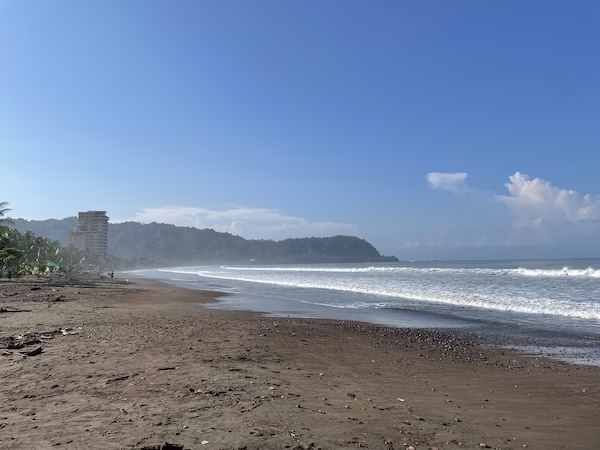
Uvita
Uvita, on the other hand, feels like a more family friendly example of what happens when the gringos take over. The beach is lovely, but the town feels more like a settler colony than anything else. Everything is in English, and everyone seems to be from Europe or North America. I know there must be Ticos somewhere, but we didn’t see any during our night in Uvita and it felt a little creepy.
Puerto Viejo de Talamanca
I visited Puerto Viejo on Costa Rica’s Caribbean coast ten years ago and loved it. Well, ten years is a long time. Since I left, the expats moved in and the place has gone to hell. The charming little Caribbean beach town I fell in love with was replaced by glitzy, gringo friendly gentrification. The local flair disappeared and left the town feeling rather soulless. We ended up staying in nearby Cahuita, which was better. However, both towns seemed to be missing a lot of the local charm that made them attractive in the first place.
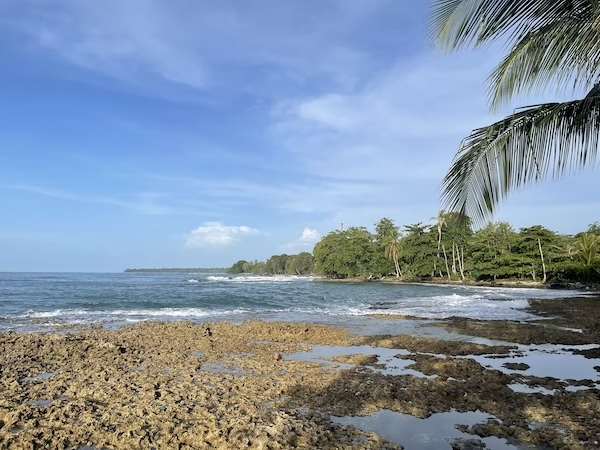
Manuel Antonio
Manuel Antonio is the most visited park in all of Costa Rica, and it shows. The trails are crowded, and at times it can feel like rainforest Disney Land. Outside the park, fake tour guides, dressed like park rangers, try to scam you into expensive tours. Fake parking attendants try to steer you into expensive, far away parking lots.
Inside the park, you aren’t allowed to bring food because the tourists who came before you were feeding the animals. I don’t mind the food ban, per se, but when we visited all the restaurants and cafes inside the park were closed. Everybody else seemed to have smuggled food in anyway. Dodging crowds and scammers while hangry is not an experience I’d recommend to anyone.
Read about our horrible day in Manuel Antonio here: Manuel Antonio is Costa Rica’s Most Disappointing National Park
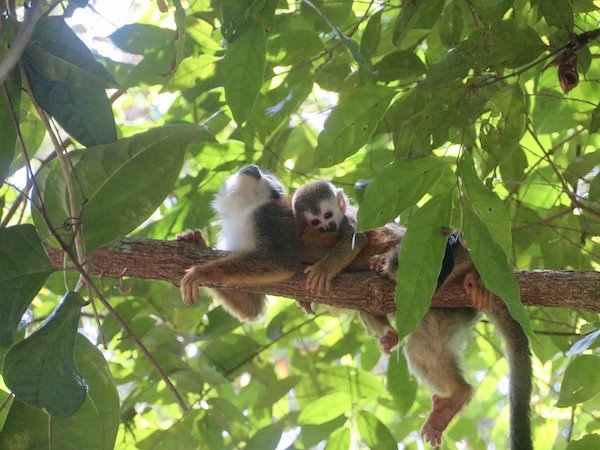
Final Thoughts on Costa Rica
Thankfully, Costa Rica has plenty of other authentic, wonderful places to visit that easily outweigh the over-touristed duds. Enough that it’s easy to fall in love with this little Central American gem. There are few other places in the world where the raw beauty of nature is so up close and easily accessible.
Beyond the nature, the Costa Rican people themselves are absolutely wonderful. The Ticos are incredibly friendly, and in general will go out of their way to make you feel welcome in their country.
While over tourism has caused plenty of problems, Costa Rica’s established tourist industry also means the country has a well-developed travel infrastructure. There are plenty of options to satisfy everyone from cheap backpackers to luxury package tourists. And even plenty of astounding sights to satisfy the most jaded travel hipster. Costa Rica is popular for a reason. It really is spectacular.
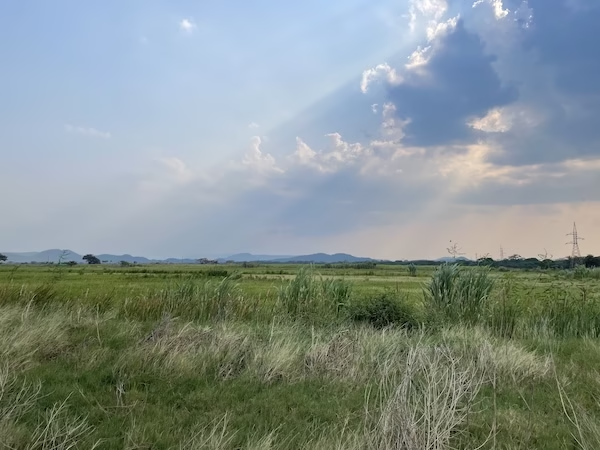
Useful Websites for Traveling Costa Rica
As much as we might long for the days when you could show up to a town with nothing more than a beat-up guidebook and a sense of adventure, today much of traveling involves being glued to our phones making bookings. I’ve compiled some helpful apps and websites below that at least help make those bookings more convenient so you can spend less time staring at your phone and more time exploring at your surroundings. Some of these sites are affiliate links that give me a small commission at no cost to you if you chose to book through them. All of them are sites I’ve used personally and have no problem recommending.
Just be sure to do your due diligence as much as possible. Only hire local guides and try as much as possible to stay in locally owned hotels and hostels so that your hard earned travel dollars actually go to support the local economies of the places you visit.
Booking.com is basically the world’s only hotel booking website. They have hotels, guesthouses and vacation rentals all over Costa Rica.
Hostelworld is the go-to site for booking hostels. If dorm rooms and shared bathrooms are your thing, you’ll find hostels all over Costa Rica.
Get Your Guide offers tours and activities all around the world. Unlike some other sites and apps that do the same thing, you can actually find some reasonably priced deals here.
Centro Coasting is a great website to look up bus routes and times throughout Central America. Schedules change regularly, and the site is sometimes not as up to date as you’d like. However, it’s a good resource to help give you an idea when the buses leave, or at least get you to the right terminal.

